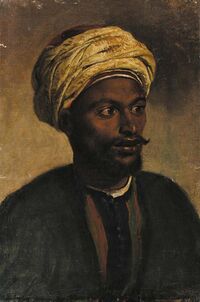Lourale ka Maoube

The Lourale ka Maoube, alternatively referred to as al-Tanwir in Badawiyan or the Kupokana Kwevakachenjera in Rwizi and generally translated as the Contestations of the Elders, was a period of scientific, mathematical, theological and philosophical advancement during the Bahian Golden Age. The Lourale is generally accepted to have started around the beginning of the fifteenth century, symbolized by the theological treatise Akrivia Nakosmos (Absolute truth of the universe) by Theodoros of Igitare, which pioneered the use of detailed inquiries into astronomy to support Irfanic theology and its claims to intellectual supremacy. Badi, Fetishist, and Irfanic communities competed to vindicate their faiths through science and debate, which was seen as an alternative and more efficient form of competition compared to direct warfare in the context of the Djaladjie. Such inquiries were thus heavily supported by houregeries, and patronage of influential thinkers added to the prestige of rulers that could translate into very real political capital as lesser communities were swayed into conversion or adherence. The end of the Lourale ka Maoube is generally marked in the mid seventeenth century, coinciding with the end of the Bahian Golden Age and beginnings of Toubacterie.
History
Origins
High Lourale
Decline
Legacy
Advances
Kerala school of astronomy and mathematics
Astronomy
Louralic astronomy is often regarded as one of the most fruitful eras in astronomical discovery, with many aspects of modern astronomy tracing their discovery to the Lourale ka Maoube. Many new celestial bodies, some of which significant, were first purported and catalogued during the Louralic era of astronomy. As well as this, Bahian astronomers were some of the first to theorise the heliocentric model of the universe, with famous Bahian theologian and astronomer Theodoros of Igitare proposing what is now the Theodesian model of the universe, one of the first heliocentric models to gain a mainstream support. The model combined already theorised elements with some of Theodoros' own thought. Theodoros combined the ideas of a physically correct and philosophical system, notably systems that had emerged during the Djaladjie, with a mathematically correct model. While the Theodesian model was one of the first to propose heliocentrism, the model was eventually disproven by Attiyah al-Judami, who collected a series of vital observations through his telescope that eventually led to the Judamic model of the universe that is accepted to have been the foundation for many modern models.
Bahia would continue to be a hub for the improvements found in the telescope, initially invented by al-Judami to study the stars, and progress in the size, quality and magnification of telescopes led to a large increase in the observations of stars, with the biggest observatory yet seen in Bahia being constructed on the site of the University of Kambou around the 1520s.
